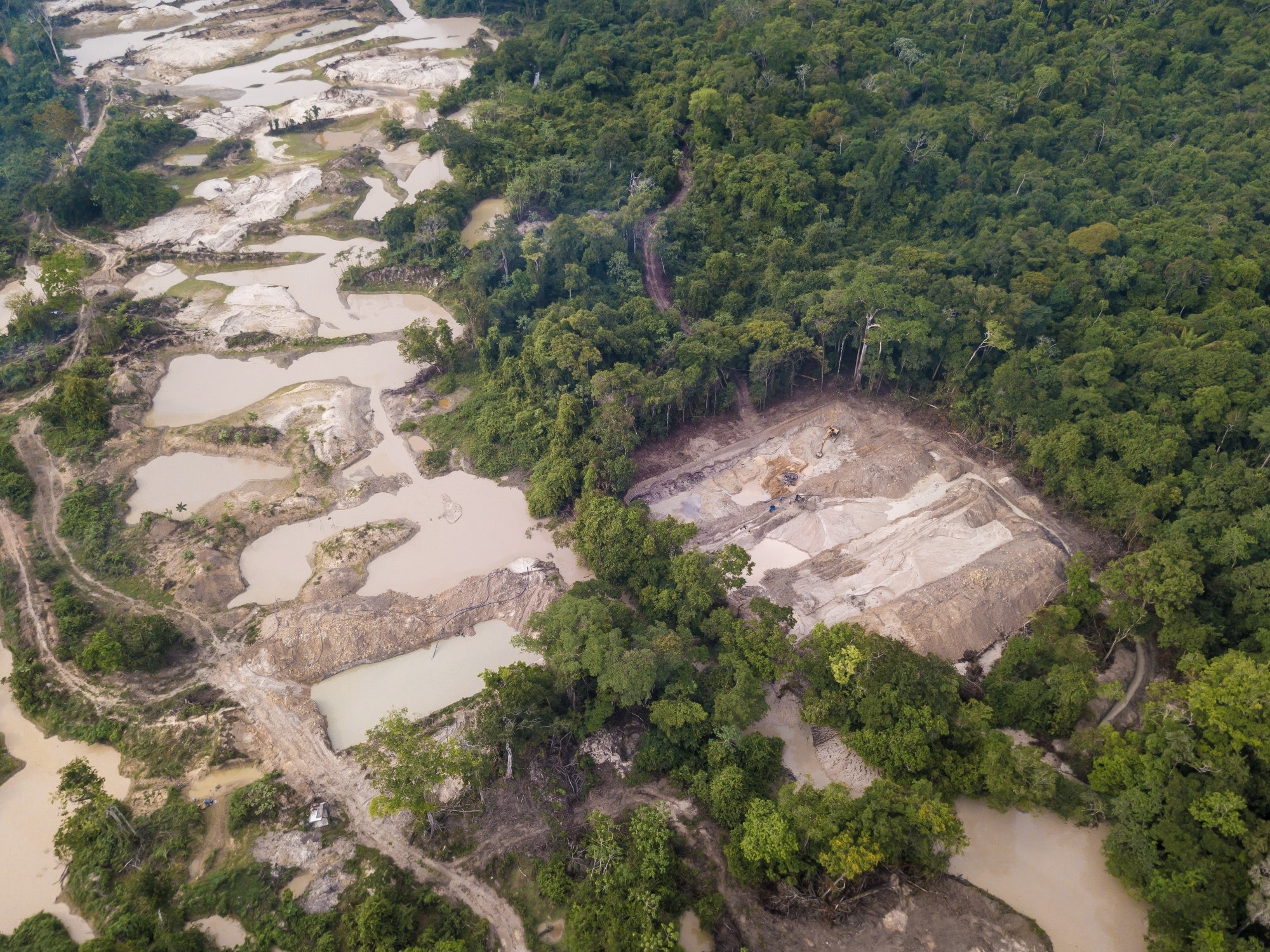In a recent article published in Nature Communications, researchers investigated the multifaceted impacts of mining activities in Brazil, emphasizing their environmental and economic consequences. The study examines how different mining types influence deforestation patterns and local economic development, addressing concerns about the sustainability of expanding extractive industries.

Image Credit: PARALAXIS/Shutterstock.com
Background
Brazil's mining sector has historically contributed significantly to its economic growth, but its expansion has raised environmental alarm, especially regarding deforestation in the Amazon.
Two primary forms of mining are distinguished: industrial mining, characterized by large-scale formal operations with regulated land use, and garimpo mining, which is often informal, small-scale, and poorly regulated.
Although providing livelihoods to many, Garimpo operations are associated with environmental degradation, including extensive forest loss and pollution, particularly due to mercury use in gold extraction.
Previous literature indicates that resource dependence can lead to environmental degradation and economic vulnerability, known as the resource curse. The study builds upon this dialogue by quantitatively analyzing how these two types of mining differentially impact forests and local economies over time.
The Current Study
The researchers employed an econometric approach combined with matching techniques to isolate the effects of mining on deforestation and economic outcomes in Brazilian municipalities. Utilizing high-resolution land cover data from the MapBiomas project, the team identified locations with active industrial and garimpo mining each year.
They converted continuous measures of land cover, such as hectares of land covered by mining, into binary indicators to simplify interpretation.
They used a one-to-many matching strategy to control for confounding factors—like population density, natural forest cover, rainfall, elevation, and municipality size. This approach matched mining municipalities with similar non-mining control municipalities to enhance comparability and reduce bias.
The analysis incorporated spatial econometric models to account for geographical spillover effects, recognizing that mining impacts can extend beyond the boundaries of individual municipalities. These models also controlled for variables such as local environmental conditions and socioeconomic factors, providing robust estimates of mining’s influence on deforestation and economic variables.
Results and Discussion
The findings reveal that industrial and garimpo mining are significantly associated with increased forest loss, but the magnitude and spatial patterns differ.
Industrial mining incurs measurable deforestation directly within mining municipalities, and its effects spill over into neighboring areas, amplifying regional forest loss.
Garimpo mining, despite being smaller-scale and often informal, exhibits a stronger correlation with deforestation rates, particularly because it frequently occurs in the Amazon—a region susceptible to land-use changes.
The study estimates that garimpo mining, even when less extensive in terms of land area, contributes disproportionately to forest degradation due to its widespread and unregulated nature.
Regarding economic impacts, the research indicates that in the short term, mining activities can boost local GDP through revenues from taxes and employment; however, these benefits are often volatile and highly dependent on international commodity prices.
Sustained economic growth was generally limited, as many municipalities remained vulnerable to market fluctuations and dependent on ongoing extraction activities.
The analysis highlights that weak regulatory oversight exacerbates the environmental damage from garimpo mining, leading to widespread ecological degradation.
The authors interpret these results within broader discussions on sustainability and policy. They emphasize that informal garimpo mining poses significant environmental risks with limited economic benefits, as many residents involved in such activities operate in an illegal or semi-legal context that hampers long-term economic planning and environmental enforcement.
Formalizing garimpo mining could be a step toward mitigating forest loss, improving environmental standards, and better integrating small-scale miners into regulated sectors.
The study also underscores that the economic contributions of mining are often ephemeral and vulnerable to external shocks, such as mineral price fluctuations, which can cause local economies to destabilize. The spatial dependence of outcomes suggests that regional policies are necessary to address the wider landscape of land-use change and environmental mitigation.
Conclusion
The research concludes that the expansion of Brazil’s mining sector, especially informal garimpo operations, is strongly associated with increased deforestation, with significant implications for biodiversity, climate change, and ecosystem services.
While mining can generate short-term economic gains, these benefits are often fragile and accompanied by environmental costs that threaten long-term sustainability.
The dependence on extractive activities exposes regions to external economic shocks, undermining potential for lasting development.
To foster sustainable regional development, policies must go beyond merely promoting mining; they should focus on diversifying local economies, strengthening regulatory enforcement, and ensuring equitable distribution of revenues generated by mining.
The study contributes valuable quantitative evidence to debates on resource management, illustrating that mining-driven growth risks exacerbating environmental degradation and economic instability without proper oversight and planning.
The findings call for integrated policies that simultaneously address environmental protection and socioeconomic resilience, especially in ecologically sensitive regions like the Amazon.
Source:
Luckeneder S., Maus V., et al. (2025). Forest loss and uncertain economic gains from industrial and garimpo mining in Brazilian municipalities. Nature Communications 16, 6543. DOI: 10.1038/s41467-025-61930-8, https://www.nature.com/articles/s41467-025-61930-8